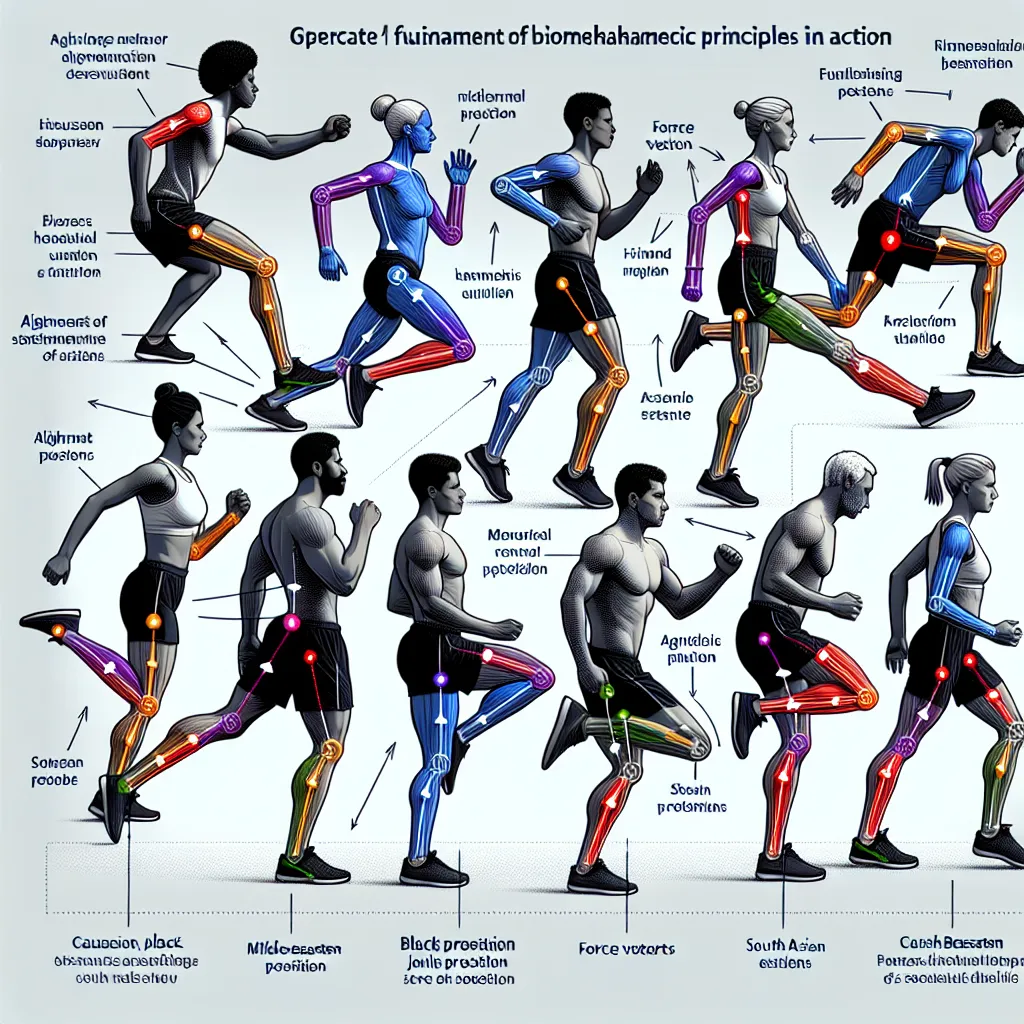“Proper biomechanics” is a crucial term in the field of sports science and physical performance. Let’s break it down:
Definition: Proper biomechanics refers to the correct application of mechanical principles to human movement, ensuring efficient and safe performance in physical activities.
Part of speech: Noun phrase
Pronunciation: /ˈprɒpə baɪəʊmɪˈkænɪks/
This term is particularly relevant for IELTS candidates interested in sports, health sciences, or physical education. Understanding and using this vocabulary effectively can significantly enhance your performance in the IELTS exam, especially in the Speaking and Writing sections.

Context and Usage of “Proper Biomechanics”
Examples in Context
-
Athletes who focus on proper biomechanics are less likely to suffer from injuries during training.
Analysis: This sentence highlights the preventive aspect of proper biomechanics in sports training. -
The physical therapist emphasized the importance of proper biomechanics in rehabilitating the patient’s knee injury.
Analysis: Here, the term is used in a medical context, showing its relevance in rehabilitation processes. -
Studying proper biomechanics can significantly improve a golfer’s swing and overall performance.
Analysis: This example demonstrates the application of biomechanics in enhancing specific sports techniques. -
The ergonomics expert advised office workers on proper biomechanics to prevent repetitive strain injuries.
Analysis: This sentence extends the concept beyond sports, applying it to everyday work environments. -
In dance, proper biomechanics is essential for executing complex movements gracefully and safely.
Analysis: This example illustrates the importance of biomechanics in performing arts, particularly dance.
Common Contexts
“Proper biomechanics” is frequently encountered in:
- Sports training and performance analysis
- Physical therapy and rehabilitation
- Ergonomics and occupational health
- Dance and performing arts
- Fitness and exercise science
Frequency in IELTS
This term is most likely to appear in:
- IELTS Reading: Academic passages related to sports science or health
- IELTS Writing Task 2: Essays on topics related to health, sports, or technology in physical performance
- IELTS Speaking: Part 3 discussions about sports, health, or modern training methods
Vocabulary Analysis
Word Structure
- “Proper”: An adjective meaning correct or appropriate
- “Biomechanics”: A compound noun
- “Bio-“: Prefix meaning life or living organisms
- “Mechanics”: The branch of physics dealing with motion and forces
Synonyms and Antonyms
Synonyms:
-
Correct body mechanics
- Part of speech: Noun phrase
- Pronunciation: /kəˈrekt ˈbɒdi mɪˈkænɪks/
- Definition: The right way of using the body in daily activities and exercises
-
Optimal movement patterns
- Part of speech: Noun phrase
- Pronunciation: /ˈɒptɪməl ˈmuːvmənt ˈpætənz/
- Definition: The most effective and efficient ways of moving the body
-
Ergonomic techniques
- Part of speech: Noun phrase
- Pronunciation: /ˌɜːɡəˈnɒmɪk tekˈniːks/
- Definition: Methods designed to optimize human well-being and overall system performance
Antonyms:
-
Improper form
- Part of speech: Noun phrase
- Pronunciation: /ɪmˈprɒpə fɔːm/
- Definition: Incorrect or inefficient body positioning or movement
-
Poor technique
- Part of speech: Noun phrase
- Pronunciation: /pʊə tekˈniːk/
- Definition: Suboptimal method of performing physical actions
Memorization Techniques
Mind Mapping
Create a mind map with “Proper Biomechanics” at the center, branching out to related concepts:
- Sports Performance
- Injury Prevention
- Efficiency of Movement
- Physical Therapy
- Ergonomics
- Body Alignment
Visualization Technique
Imagine a ballet dancer performing a perfect pirouette. Visualize the alignment of their spine, the positioning of their feet, and the graceful movement of their arms. This image embodies the essence of proper biomechanics – the harmonious and efficient coordination of body movements.
Practice Exercises
Application in IELTS Writing
Task: Write a paragraph discussing the importance of proper biomechanics in modern sports training. Use at least three related terms from the mind map.
Sample answer:
“In contemporary sports training, proper biomechanics plays a pivotal role in enhancing athlete performance and preventing injuries. By focusing on efficiency of movement, coaches can help athletes optimize their techniques, leading to improved results in competitions. Moreover, the application of biomechanical principles in physical therapy has revolutionized the rehabilitation process for injured athletes, allowing for faster and more effective recovery. The integration of proper biomechanics into training regimens not only boosts performance but also contributes significantly to the longevity of an athlete’s career by minimizing the risk of repetitive strain injuries.”
IELTS Speaking Practice
Imagine you’re answering this question in IELTS Speaking Part 3:
Question: “How do you think technology has changed the way athletes train?”
Sample answer:
“Technology has revolutionized athletic training in numerous ways, but one of the most significant impacts has been in the area of proper biomechanics. Advanced motion capture systems and high-speed cameras now allow coaches and athletes to analyze movement patterns in minute detail. This technology enables them to identify even the slightest inefficiencies in an athlete’s technique and make precise adjustments to optimize performance. For instance, in sports like swimming or track and field, where fractions of a second can make the difference between winning and losing, ensuring proper biomechanics through technological analysis can be game-changing. Moreover, wearable devices that provide real-time feedback on body positioning and movement have made it possible for athletes to maintain proper form even during intense training sessions, reducing the risk of injuries and enhancing overall performance.”
Conclusion
Mastering the concept and vocabulary of “proper biomechanics” can significantly enhance your performance in the IELTS exam, particularly in tasks related to sports, health, and physical performance. Remember to practice using this term and its related vocabulary in context, whether you’re writing essays, describing graphs, or engaging in speaking tasks. The key to retention is regular practice and application in varied contexts.
We encourage you to share your experiences with learning and using this term in the comments section below. How has understanding “proper biomechanics” improved your IELTS preparation? Do you have any questions about applying this concept in different IELTS tasks? Your insights and queries can help create a valuable learning community for all IELTS aspirants.